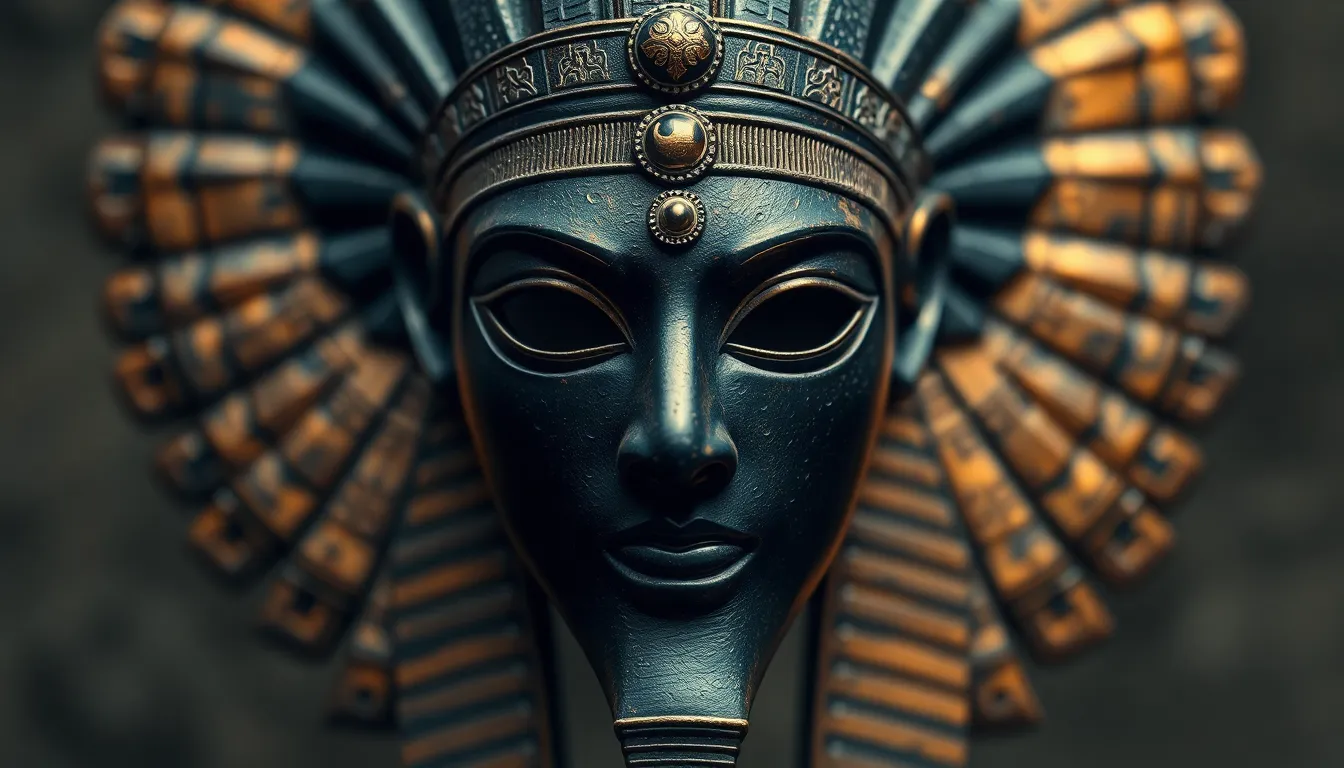The Origins of the Sacred Mask: Myths of Transformation and Identity
I. Introduction
Sacred masks hold a unique place in the cultural tapestry of human civilization. Defined as objects worn on the face to represent a spirit, deity, or character, these masks have served various purposes across different cultures. They play a pivotal role in rituals, ceremonies, and performances, allowing individuals to connect with the divine, express identity, or transform into other beings.
The importance of masks extends beyond mere decoration; they serve as powerful symbols of identity and transformation. This article explores the historical context of sacred masks, the myths surrounding transformation, their role in identity, and their spiritual significance, culminating in a reflection on the influence of masks in modern culture.
II. Historical Context of Sacred Masks
Masks have been used since ancient times, with their origins tracing back to prehistoric rituals. Ancient civilizations, including the Egyptians, Greeks, and various indigenous tribes, employed masks in their cultural practices.
- Ancient Egypt: Masks were often used in burial practices, with the most famous being the funerary mask of Tutankhamun, symbolizing the pharaoh’s transformation into the afterlife.
- Greek Theatre: Actors wore masks to portray different characters and amplify their voices, embodying a range of emotions and identities.
- Indigenous Cultures: Many Native American tribes use masks in ceremonial dances to invoke spirits and tell stories of creation and transformation.
Over time, mask-making techniques have evolved significantly. From simple carved wooden pieces to intricate designs adorned with feathers, beads, and paints, the artistry involved in mask creation reflects the society from which it originates.
In different cultures, masks have held varying degrees of cultural significance, often linked to social status, spirituality, and community identity. They act as a bridge between the physical and spiritual worlds, allowing for deeper connections with ancestral traditions.
III. Myths of Transformation
Masks are not merely physical objects; they are profound symbols of metamorphosis. In many myths, wearing a mask signifies the transformation of the wearer into another being, whether that be a deity, animal, or spirit.
- Greek Myths: The story of Dionysus highlights transformation, where followers would wear masks to embody the god of wine and revelry, entering a state of ecstasy and liberation.
- African Folklore: In many African cultures, masks represent ancestors and deities, allowing the wearer to connect with their spiritual lineage and invoke transformation during rituals.
- Native American Traditions: Masks worn during ceremonies often represent animals or ancestors, facilitating a transformation that connects the community with their heritage and the natural world.
The psychological implications of transformation through masks are profound. Masks can provide a safe space for individuals to explore different aspects of their identity, allowing for healing and self-discovery.
IV. Identity and the Sacred Mask
The duality of concealment and revelation is a central theme in the use of sacred masks. While they hide the wearer’s face, they simultaneously reveal deeper truths about identity and cultural narratives.
Masks play a vital role in expressing social and religious identities. They can signify membership within a particular community or convey specific spiritual beliefs.
For example, in tribal rituals, masks may denote social hierarchy or convey the collective identity of a group. In modern performances, masks can be used to challenge societal norms or explore personal identity.
Some case studies include:
- Tribal Rituals: In many African tribes, masks are integral to initiation ceremonies, marking the transition from youth to adulthood.
- Modern Theatre: Contemporary performances often employ masks to explore themes of identity, culture, and transformation, inviting audiences to reflect on their own experiences.
V. Spiritual and Ritualistic Significance
The spiritual significance of masks in shamanistic practices is profound. They are often used in healing rituals, allowing the shaman to channel spirits and facilitate transformation for the individual seeking healing.
Masks also play a role in ancestral worship. They embody the spirits of ancestors, connecting the living with those who have passed and fostering a sense of continuity within the culture.
Transformative experiences are frequently reported during ritualistic mask-wearing, as participants often describe entering altered states of consciousness, allowing for profound spiritual insights and personal revelations.
VI. The Art of Mask Making
The art of mask making varies significantly across cultures, with different materials and techniques reflecting regional practices. Common materials include wood, clay, fabric, and animal hides, each chosen for their symbolic significance and availability.
The relationship between the artist and the mask is deeply personal. Many artisans believe that the process of creating a mask involves connecting with the spirit of the entity they are representing, infusing the mask with life and meaning.
Contemporary interpretations of traditional masks have emerged, with artists experimenting with new materials and techniques while honoring the cultural narratives that inspire them.
VII. The Influence of Sacred Masks in Modern Culture
Masks continue to influence modern culture in various ways. In theater and film, they are used to create powerful visual and emotional narratives, allowing actors to embody complex characters.
There has been a resurgence of interest in traditional mask-making practices, with many artists and cultural organizations working to preserve and revive these art forms. This revival fosters a greater appreciation for cultural diversity and the rich narratives that masks represent.
Today, masks have also become a form of personal and social expression. Individuals use masks to explore their identities, challenge societal norms, and engage in political commentary, reflecting the ongoing relevance of transformation and identity in contemporary society.
VIII. Conclusion
The enduring legacy of sacred masks is evident in their continued significance across cultures and time. They invite us to reflect on our own identities, the transformations we undergo, and the narratives that shape our lives.
As we delve into the diverse cultural narratives surrounding masks, we uncover the richness of human experience and the universal themes of transformation and identity that resonate throughout history.
We encourage readers to explore and appreciate the multifaceted nature of sacred masks, recognizing their power to connect us with our past and inspire our future.




